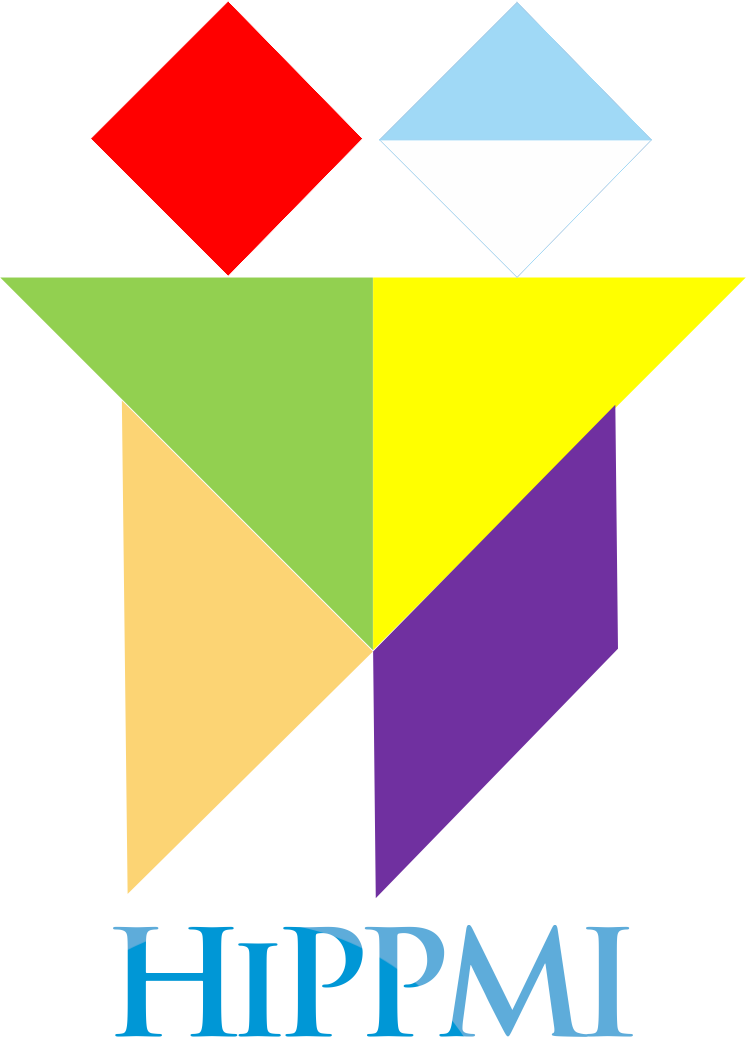SELF-EFFICACY OF JUNIOR HIGH SCHOOL STUDENTS IN MATHEMATIC PROBLEM SOLVING
Abstract
This study aims to describe the self-efficacy of junior high school students in Medan City and Deli Serdang Regency, North Sumatra in solving mathematical problems in social arithmetic material. This research includes survey research with quantitative and qualitative approaches. The research subjects were 67 junior high school students in Medan City and Deli Serdang Regency, North Sumatra who came from two schools with the category of one public school and one private school. The instrument used is a self-efficacy questionnaire consisting of 27 statement items based on self-efficacy indicators that will be filled out by students, and interview guidelines. The results showed that the average self-efficacy of private junior high school students in Medan City and Deli Serdang Regency, North Sumatra as a whole of 67 students was in the high category, which was 90.24. In general, students have a high tendency of self-efficacy. For example, having confidence or confidence in the abilities possessed in carrying out and completing the tasks at hand so that they are able to overcome obstacles and achieve the expected goals, so it can be concluded that students who have high efficacy abilities will have an impact on their learning achievement and students' mathematical problem solving. getting better.
Keywords
Full Text:
PDFReferences
Amabile, T. M., Schatzel, E. A., Moneta, G. B., & Kramer, S. J. (2004). Leader behaviors and the work environment for creativity: Perceived leader support. The Leadership Quarterly, 15(1), 5–32. https://doi.org/10.1016/J.LEAQUA.2003.12.003
Aparicio-Flores, M. P., Esteve-Faubel, J. M., Esteve-Faubel, R. P., & Álvarez-Teruel, J. D. (2020). High Academic Self-Efficacy and Dispositional Empathy in Future Teachers. Sustainability 2020, Vol. 12, Page 6728, 12(17), 6728. https://doi.org/10.3390/SU12176728
Bandura, A. (2016). Organisational Applications of Social Cognitive Theory: Http://Dx.Doi.Org/10.1177/031289628801300210, 13(2), 275–302. https://doi.org/10.1177/031289628801300210
Bénabou, R., & Tirole, J. (2002). Self-Confidence and Personal Motivation. The Quarterly Journal of Economics, 117(3), 871–915. https://doi.org/10.1162/003355302760193913
Blum, W., & Niss, M. (1991). Applied mathematical problem solving, modelling, applications, and links to other subjects — State, trends and issues in mathematics instruction. Educational Studies in Mathematics 1991 22:1, 22(1), 37–68. https://doi.org/10.1007/BF00302716
Brand-Gruwel, S., Wopereis, I., & Vermetten, Y. (2005). Information problem solving by experts and novices: analysis of a complex cognitive skill. Computers in Human Behavior, 21(3), 487–508. https://doi.org/10.1016/J.CHB.2004.10.005
Cai, J., & Nie, B. (2007). Problem solving in Chinese mathematics education: research and practice. ZDM 2007 39:5, 39(5), 459–473. https://doi.org/10.1007/S11858-007-0042-3
Dani, B.-Z., & Joan, G. (2004). Statistical Literacy, Reasoning, and Thinking: Goals, Definitions, and Challenges. The Challenge of Developing Statistical Literacy, Reasoning and Thinking, 3–15. https://doi.org/10.1007/1-4020-2278-6_1
Fikes, R. E., & Nilsson, N. J. (1971). Strips: A new approach to the application of theorem proving to problem solving. Artificial Intelligence, 2(3–4), 189–208. https://doi.org/10.1016/0004-3702(71)90010-5
Ge, X., & Land, S. M. (2004). A conceptual framework for scaffolding III-structured problem-solving processes using question prompts and peer interactions. Educational Technology Research and Development 2004 52:2, 52(2), 5–22. https://doi.org/10.1007/BF02504836
Heller, P., Keith, R., & Anderson, S. (1998). Teaching problem solving through cooperative grouping. Part 1: Group versus individual problem solving. American Journal of Physics, 60(7), 627. https://doi.org/10.1119/1.17117
Hiebert, J., Carpenter, T. P., Fennema, E., Fuson, K., Human, P., Murray, H., Olivier, A., & Wearne, D. (2016). Problem Solving as a Basis for Reform in Curriculum and Instruction: The Case of Mathematics: Https://Doi.Org/10.3102/0013189X025004012, 25(4), 12–21. https://doi.org/10.3102/0013189X025004012
Kelly, C. A. (2006). Using Manipulatives in Mathematical Problem Solving: A Performance-Based Analysis. The Mathematics Enthusiast, 3(2), 184–193. https://doi.org/10.54870/1551-3440.1049
Larson, L. C., & Miller, T. N. (2012). 21st Century Skills: Prepare Students for the Future. Http://Dx.Doi.Org/10.1080/00228958.2011.10516575, 47(3), 121–123. https://doi.org/10.1080/00228958.2011.10516575
Lubis, A. N. M. T., Widada, W., Herawaty, D., Nugroho, K. U. Z., & Anggoro, A. F. D. (2021). The ability to solve mathematical problems through realistic mathematics learning based on ethnomathematics. Journal of Physics: Conference Series, 1731(1), 012050. https://doi.org/10.1088/1742-6596/1731/1/012050
Nghi, P. T., & London, J. D. (2010). The Higher Education Reform Agenda: A Vision for 2020. Higher Education Dynamics, 29, 51–64. https://doi.org/10.1007/978-90-481-3694-0_4/COVER/
Prabawanto, S. (2018). The enhancement of students’ mathematical self-efficacy through teaching with metacognitive scaffolding approach. Journal of Physics: Conference Series, 1013(1), 012135. https://doi.org/10.1088/1742-6596/1013/1/012135
Putnam, R. T., Heaton, R. M., Prawat, R. S., & Remillard, J. (2015). Teaching Mathematics for Understanding: Discussing Case Studies of Four Fifth-Grade Teachers. Https://Doi.Org/10.1086/461723, 93(2), 213–228. https://doi.org/10.1086/461723
Schoenfeld, A. H. (2018). Pólya, Problem Solving, and Education. Https://Doi.Org/10.1080/0025570X.1987.11977325, 60(5), 283–291. https://doi.org/10.1080/0025570X.1987.11977325
Siregar, R. N., Karnasih, I., & Hasratuddin, H. (2020). PENGEMBANGAN PERANGKAT PEMBELAJARAN BERBASIS PENDEKATAN REALISTIK UNTUK MENINGKATKAN KEMAMPUAN BERFIKIR KREATIF DAN SELF-EFFICACY SISWA SMP. JURNAL PENDIDIKAN GLASSER, 4(1), 45–63. https://doi.org/10.32529/GLASSER.V4I1.441
Siregar, R. N., & Prabawanto, S. (2020). SELF-EFFICACY SISWA DALAM MENGHADAPI TUGAS-TUGAS MATEMATIS NON RUTIN DITINJAU DARI KEMAMPUAN AWAL MATEMATIKA SISWA. E-Conference STKIP PGRI Sumatera Barat, INTEGRASI TEKNOLOGI DALAM PEMBELAJARAN MATEMATIKA KREATIF DI ERA KENORMALAN BARU. http://econference.stkip-pgri-sumbar.ac.id/index.php/matematika/itpmkeb/paper/view/1215
Siregar, R. N., & Prabawanto, S. (2021). Increasing Students’ Self-Efficacy Through A Realistic Mathematical Education. (JIML) JOURNAL OF INNOVATIVE MATHEMATICS LEARNING, 4(2), 63–74. https://doi.org/10.22460/JIML.V4I2.P63-74
Sniehotta, F. F., Scholz, U., & Schwarzer, R. (2007). Bridging the intention–behaviour gap: Planning, self-efficacy, and action control in the adoption and maintenance of physical exercise. Https://Doi.Org/10.1080/08870440512331317670, 20(2), 143–160. https://doi.org/10.1080/08870440512331317670
Stacey, K. (2011). The PISA View of Mathematical Literacy in Indonesia. Journal on Mathematics Education, 2(2), 95–126. https://doi.org/10.22342/JME.2.2.746.95-126
Sweller, J., & Cooper, G. A. (2009). The Use of Worked Examples as a Substitute for Problem Solving in Learning Algebra. Http://Dx.Doi.Org/10.1207/S1532690xci0201_3, 2(1), 59–89. https://doi.org/10.1207/S1532690XCI0201_3
Zulkosky, K. (2009). Self-Efficacy: A Concept Analysis. Nursing Forum, 44(2), 93–102. https://doi.org/10.1111/J.1744-6198.2009.00132.X
DOI: https://doi.org/10.17509/sigmadidaktika.v9i1.48350
Refbacks
- There are currently no refbacks.
e-ISSN: 2987-3894
p-ISSN: 2252-7435
This work is licensed under a Creative Commons Attribution-ShareAlike 4.0 International License.









